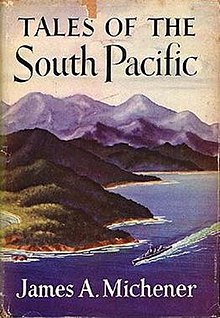
Mary Virginia Martin was an American actress and singer. A muse of Rodgers and Hammerstein, she originated many leading roles on stage over her career, including Nellie Forbush in South Pacific (1949), the title character in Peter Pan (1954), and Maria von Trapp in The Sound of Music (1959). She was named a Kennedy Center Honoree in 1989. She was the mother of actor Larry Hagman.

Upolu is an island in Samoa, formed by a massive basaltic shield volcano which rises from the seafloor of the western Pacific Ocean. The island is 75 kilometres long and 1,125 square kilometres in area, making it the second largest of the Samoan Islands by area. With approximately 145,000 inhabitants, it is by far the most populous of the Samoan Islands. Upolu is situated to the southeast of Savai'i, the "big island". Apia, the capital, is in the middle of the north coast, and Faleolo International Airport is at the western end of the island. The island has not had any historically recorded eruptions, although there is evidence of three lava flows, dating back only to between a few hundred and a few thousand years ago.

South Pacific is a musical composed by Richard Rodgers, with lyrics by Oscar Hammerstein II and book by Hammerstein and Joshua Logan. The work premiered in 1949 on Broadway and was an immediate hit, running for 1,925 performances. The plot is based on James A. Michener's Pulitzer Prize–winning 1947 book Tales of the South Pacific and combines elements of several of those stories. Rodgers and Hammerstein believed they could write a musical based on Michener's work that would be financially successful and, at the same time, send a strong progressive message on racism.

Rodgers and Hammerstein was a theatre-writing team of composer Richard Rodgers (1902–1979) and lyricist-dramatist Oscar Hammerstein II (1895–1960), who together created a series of innovative and influential American musicals. Their popular Broadway productions in the 1940s and 1950s initiated what is considered the "golden age" of musical theatre. Five of their Broadway shows, Oklahoma!, Carousel, South Pacific, The King and I and The Sound of Music, were outstanding successes, as was the television broadcast of Cinderella (1957). Of the other four shows that the team produced on Broadway during their lifetimes, Flower Drum Song was well-received, and none was an outright flop. Most of their shows have received frequent revivals around the world, both professional and amateur. Among the many accolades their shows garnered were thirty-four Tony Awards, fifteen Academy Awards, two Pulitzer Prizes and two Grammy Awards.
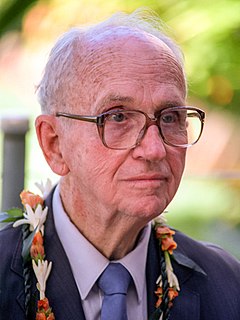
James Albert Michener was an American writer. He wrote more than 40 books, most of which were long, fictional family sagas covering the lives of many generations in particular geographic locales and incorporating detailed history. Many of his works were bestsellers and were chosen by the Book of the Month Club; he was known for the meticulous research that went into his books.
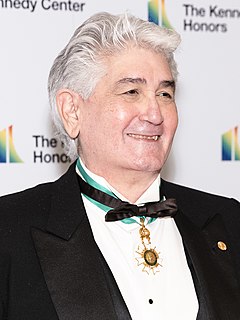
Justino Díaz is a Puerto Rican operatic bass-baritone. In 1963, Díaz won an annual contest held at the Metropolitan Opera of New York, becoming the first Puerto Rican to obtain such an honor and as a consequence, made his Metropolitan debut in October 1963 in Verdi's Rigoletto as Monterone.
"Some Enchanted Evening" is a show tune from the 1949 Rodgers and Hammerstein musical South Pacific. It has been described as "the single biggest popular hit to come out of any Rodgers and Hammerstein show." Andrew Lloyd Webber describes it as the "greatest song ever written for a musical".
"Bali Ha'i", also spelled "Bali Hai", is a show tune from the 1949 Rodgers and Hammerstein musical South Pacific. The name refers to a mystical island, visible on the horizon but not reachable, and was originally inspired by the sight of Ambae island from neighboring Espiritu Santo in Vanuatu, where author James Michener was stationed in World War II.
The South Pacific is the Southern Hemisphere portion of the Pacific Ocean, Earth's largest oceanic division, and which includes several islands and archipelagos.
Bloody Mary is a character in the 1946 book Tales of the South Pacific by James Michener, which was made into the 1949 musical South Pacific by Rodgers and Hammerstein, and later into a film in 1958.
"You've Got to Be Carefully Taught" is a show tune from the 1949 Rodgers and Hammerstein musical South Pacific.

South Pacific is a 2001 American romantic musical television film based on the 1949 stage musical of the same name, itself an adaptation of James A. Michener's 1947 book Tales of the South Pacific.
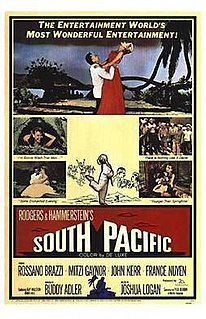
South Pacific is a 1958 American romantic musical film based on the 1949 Rodgers and Hammerstein musical South Pacific, which in turn is loosely based on James A. Michener's 1947 short-story collection Tales of the South Pacific. The film, directed by Joshua Logan, stars Rossano Brazzi, Mitzi Gaynor, John Kerr and Ray Walston in the leading roles with Juanita Hall as Bloody Mary, the part that she had played in the original stage production. The film was nominated for three Academy Awards, winning the Academy Award for Best Sound for Fred Hynes. It is set in 1943, during World War II, on an island in the South Pacific.
"A Wonderful Guy" is a show tune from the 1949 Rodgers and Hammerstein musical South Pacific. It was first introduced by Mary Martin in the original Broadway production and sung by Mitzi Gaynor in the 1958 film adaptation.
George Britton was an American singer, actor, and guitarist. A classical bass-baritone, he had an active performing career in operas, concerts, and musicals during the 1930s through the 1960s. As a stage performer he is best known for succeeding Roger Rico in the role of Emile de Becque in the original Broadway production of Rodgers and Hammerstein's South Pacific. He portrayed the role for two years opposite Martha Wright as Nellie Forbush, and for a few weeks opposite Cloris Leachman.
I'm Gonna Wash That Man Right Outa My Hair is a song from the musical South Pacific, sung by Nellie Forbush, the female lead, originally played by Mary Martin in the 1949 Broadway production. Her character, fed up with a man and singing energetically in the shower, claims that she will forget about him. The song was written by Rodgers and Hammerstein in response to Martin's request. She had starred on Broadway for years and Martin suggested that she wash her hair on stage during the performance.

Return to Paradise (1951) is a collection of short stories written by American author James A. Michener. The collection is a sequel to the Pulitzer Prize-winning book Tales of the South Pacific, the collection that launched his career in 1947. In Return to Paradise, Michener revisits the islands and cultures of the South Pacific in the late 1940s, combining factual descriptions and tales set in such exotic places as Tahiti, Fiji, New Zealand, and Australia.
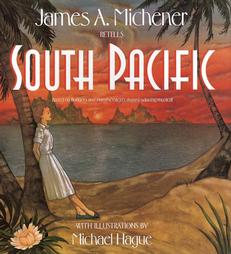
South Pacific (1992) is a book by American author James A. Michener.
As retold by Michener, the book is based on Rodgers and Hammerstein's award-winning musical, "South Pacific" based on Michener's 1947 book Tales of the South Pacific, about the lives of officers, nurses, a French expatriate, and natives on the islands of the South Pacific during World War II. Includes discussion of the original Broadway production and its cast. Unpaginated glossy pages with some beautiful full-page color illustrations.
"Younger Than Springtime" is a show tune from the 1949 Rodgers and Hammerstein musical South Pacific. It has been widely recorded as a jazz standard.

The Original Soundtrack to the film South Pacific was released in 1958. The film was based on the 1949 musical South Pacific by Rodgers and Hammerstein. The composers had much say in this recording, with many of the songs performed by accomplished singers rather than the actors in the film. Mitzi Gaynor and Ray Walston were the only two leading performers who did their own singing in the film. The roles of Emile DeBecque, Bloody Mary and Joe Cable were sung by Giorgio Tozzi, Muriel Smith and Bill Lee, respectively.
